Gewährleistung von Produktexzellenz: Qualitätskontrolle & Fertigungsstandards für Activewear & Yoga tragen Beschaffung?
Inkonsistente Qualitätskontrollprozesse führen zu Aktivkleidung, die Pillen, Verlust von Form oder beim Training fehlschlägt. Viele Unternehmen entdecken Herstellungsfehler erst, nachdem die Produkte Kunden erreicht, den Ruf der Marke schädigen und die Renditen steigern.
Eine effektive Qualitätskontrolle für Activewear erfordert einen umfassenden Ansatz: Materialtest vor der Produktion, Inline-Überwachung während der Montage, standardisierte Leistungstests, Endproduktinspektion unter Verwendung von AQL-Standards und Waschbehördenstests, um die Leistung über die Zeit zu überprüfen.
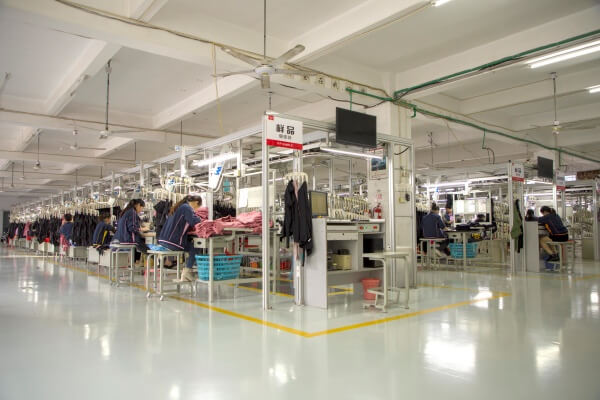
Wir haben unsere Qualitätskontrollprozesse durch jahrelange Herstellungserfahrung verfeinert und auf über 30 Millionen US -Dollar des Jahresumsatzes mit mehr als 3.000 Geschäften skaliert. Ich habe aus erster Hand gesehen, wie ordnungsgemäß QC -Protokolle den Unterschied zwischen Produkten ausmachen können, die Kunden erfreuen, und denen, die den Ruf der Marke beschädigen.
Was macht die Qualitätskontrolle für Aktivkleidung einzigartig?
Standard -Bekleidungs -QC -Prozesse sind für Activewear nicht ausreichend. Der technische Charakter dieser Produkte erfordert spezielle Tests, die viele Hersteller nicht durchführen können.
Die Qualitätskontrolle der Aktivkleidung muss sowohl die Qualität der Bauwerke als auch die Leistungsfunktionalität überprüfen. Abgesehen von der Standardinspektion des Kleidungsstücks erfordert es spezielle Tests auf Stretch-Genesung, Feuchtigkeits-Wicking-Fähigkeit, Farbton beim Schwitzen, Deckkraft unter Stretch und Haltbarkeit durch wiederholtes Waschen und Verschleiß.
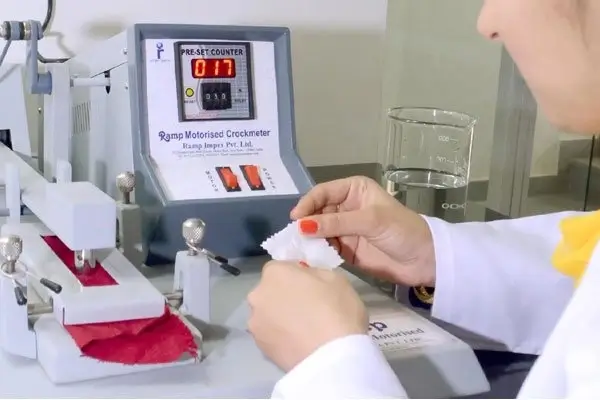
Als wir mit der Herstellung von Aktivkleidung mit der Herstellung von Activing Caiting schnell erkannten, dass unsere Standardkleidung -QC -Protokolle nicht ausreichend waren. Activewear kombiniert Elemente sowohl der Mode als auch der technischen Leistung und erfordert einen hybriden Ansatz für die Qualitätssicherung.
Die doppelte Natur von Activewear QC
Die Qualitätskontrolle der Aktivkleidung muss zwei unterschiedliche Aspekte ansprechen:
1. Qualität der Kleidungsstunde
Ähnlich wie bei der Standardbekleidung umfasst dies:
- Nahtintegrität und Stickqualität
- Identifizierung des Stofffehlers
- Größenspezifikation Einhaltung
- Elastik- und Trimmanwendung
- Gesamtaussehen und Finish
2. Leistungsfunktionalität
Einzigartig für Activewear, darunter:
- Streck- und Wiederherstellungstests
- Überprüfung des Feuchtigkeitsmanagements
- Bewertung der Opazität (insbesondere für Leggings)
- Farbfest zu schwitzen und Reibung
- Haltbarkeit durch Waschen und Verschleiß
Kritische Fehlerpunkte
Unsere Herstellungserfahrung hat mehrere gemeinsame Ausfallpunkte ermittelt, die besondere Aufmerksamkeit erfordern:
| Fehlerpunkt | Auswirkungen | Erkennungsmethode |
|---|---|---|
| Nahtversagen während der Strecke | Produktrenditen, Markenschaden | Stretch -Test zum Ausfallpunkt |
| Stoffvilling | Schlechtes Aussehen, wahrgenommene Qualitätsprobleme | Martindale Abriebetest |
| Transparenz während des Biegens | Kundenpeinlichkeit, Rückgabe | Testen der Opazität |
| Farbblutung/Verblasung | Kundenunzufriedenheit | Farbfestigkeit des Waschens, Schweißs, Reibens |
Eine umfassende Übersicht über Activewear -Materialien und -Technologie finden Sie in unserem detaillierten Leitfaden: Aktivkleidung & Yoga Wear -Technologie & Materialien: Ein Käuferleitfaden für Leistungsstoffe, Konstruktion & Haltbarkeit.
Wie sieht ein umfassender QC -Prozess aus?
Viele Unternehmen implementieren unvollständige Qualitätskontrollprozesse, die kritische Probleme verpassen. Ein wirklich effektives QC -System deckt jede Stufe von Rohstoffen bis hin zu fertigem Produkt ab.
Ein umfassender Qualitätskontrollprozess für Activewear umfasst fünf wichtige Phasen: Rohstofftests (Überprüfung der Eigenschaften der Stoffleistung), Genehmigung vor der Produktion (Bestätigung von Baumethoden), Inline-Inspektion (Fangprobleme während der Montage), Endprodukttests (Überprüfung der Leistungsmetriken) und Zuverlässigkeitstest (sichergestelltes Dauerwesen über die Zeit).
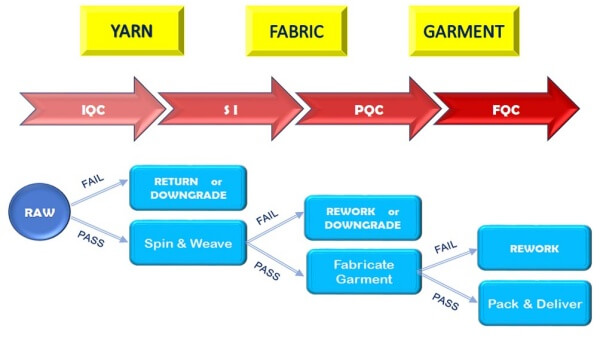
Wir haben einen mehrstufigen Qualitätskontrollprozess entwickelt, der sich im Maßstab erwiesen hat. Unser Ansatz gewährleistet eine konsistente Qualität, selbst wenn die Produktionsvolumina zunimmt:
Stufe 1: Rohstoffqualitätskontrolle
Bevor die Produktion beginnt, werden alle Materialien strenge Tests unterzogen:
Stofftests
- Physische Eigenschaften: Gewicht, Dicke, Dehnung, Genesung
- Leistungseigenschaften: Feuchtigkeitsweck, Atmungsaktivität, Schnellrocknen
- Aussehenseigenschaften: Farbkonsistenz, Oberflächengleichmäßigkeit
- Sicherheitstest: Oeko-Tex-Zertifizierung, schädliches Substanz-Screening
Bestätigung der Komponenten
- Elastik: Stretch und Genesung, Farbhaftigkeit, Breite Konsistenz
- Themen: Zugfestigkeit, Farbhaftigkeit, Kompatibilität mit Stoff
- Verkleidungen: Haltbarkeit, Befestigungsstärke, Korrosionsbeständigkeit (für Metallkomponenten)
- Etiketten/Wärmeübertragungen: Adhäsionsfestigkeit, Waschbehandlung, Komfort gegen die Haut
Stufe 2: Genehmigung vor der Produktion
Vor der Massenproduktion überprüfen wir Konstruktionsmethoden durch Probenbewertung:
- Überprüfung der Konstruktionsmethode: Bestätigen Sie optimale Nahtypen für jeden Bereich
- Anpassung der Validierung: Überprüfen Sie die Größen während der Bewegung über den Bereich
- Leistungstests: Überprüfen Sie die wichtigsten Leistungsattribute in Vorproduktionsproben
- Erscheinungsbewertung: Bewertung des Gesamtaussehens, Farbanpassung, Druckausrichtung
Stufe 3: Inline-Qualitätskontrolle
Während der Produktion führt unser QC -Team regelmäßige Schecks durch:
- Erstes Stück Inspektion: Überprüfen Sie, ob die ersten Stücke alle Spezifikationen erfüllen
- Regelmäßige Intervallprüfungen: Untersuchung von Teilen während des gesamten Produktionslaufs
- Kritische Punktinspektion: Konzentration auf Hochrisikobereiche (Nähte, elastische Anwendung)
- Messüberprüfung: Gewährleistung der Größenkonsistenz während der gesamten Produktion
Stufe 4: Endproduktinspektion
Fertige Produkte unterziehen sich vor dem Versand gründlich:
AQL-basierte Inspektion
Wir verwenden eine akzeptable Qualitätsniveau (AQL) Standards, um die Inspektionsstichprobengrößen zu bestimmen:
- Kritische Mängel: 0% akzeptabel (Sicherheitsprobleme, wichtige funktionale Ausfälle)
- Hauptfehler: 1,5-2,5% AQL (sichtbare Defekte, geringfügige funktionale Probleme)
- Kleinere Mängel: 4,0% AQL (kosmetische Probleme, die die Funktion nicht beeinflussen)
Leistungstests
Zufällige Proben werden funktionalen Tests unterzogen:
- Streck und Genesung: Sicherstellen, dass der Stoff in die ursprüngliche Form zurückkehrt
- Opazitätstests: Überprüfung der Nichttransparenz während der Strecke
- Feuchtigkeitsmanagement: Bestätigung der Wicking -Fähigkeit
- Baustärke: Testen von Nähten unter Stress
Stufe 5: Zuverlässigkeitstest
Um langfristige Leistung zu gewährleisten:
- Waschzyklus -Test: Unterwerfen Proben mehrerer Waschzyklen (typischerweise 20-30)
- Leistungsaufbewahrung: Messen Sie wichtige Attribute nach dem Waschen
- Farbaufbewahrung: Bewertung der Farbhaftigkeit nach wiederholtem Waschen
- Dimensionsstabilität: Überprüfung auf Schrumpfung oder Dehnung
Informationen zum Aufbau einer kompletten Produktlinie für Aktivkleidung finden Sie in unserem Leitfaden auf Kuratieren Sie Ihre Kollektion: Ein B2B -Leitfaden für Activewear & Yoga -Verschleißstile, Funktionen & Materialoptionen.
Welche Teststandards sollten auf Activewear angewendet werden?
Ohne standardisierte Testprotokolle ist es unmöglich, die Produktqualität konsequent zu bewerten. In vielen Unternehmen fehlen klare Testkriterien, was zu subjektiven Qualitätsbewertungen führt.
Aktivkleidung sollte nach festgelegten Standards getestet werden: Stretch and Recovery unter Verwendung von ASTM D2594, Farbheit mit AATCC 15 (Schweiß) und AATCC 61 (Waschen), Pilling -Widerstand über ASTM D4970, Feuchtigkeitsmanagement durch AATCC 195 und Opazitätstests mit standardisierten Lichtübertragungsmethoden.
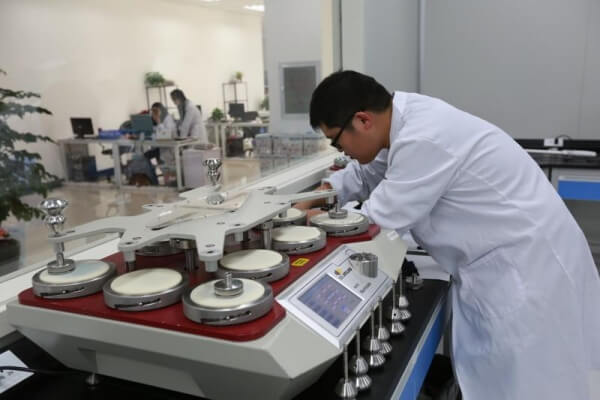
Wenn wir zu haben, wenden wir in Branchenstandard-Testprotokollen an, um die Bewertung der objektiven Qualität zu gewährleisten. Hier sind die wichtigsten Standards, die wir verwenden:
Leistungsteststandards
Streck und Genesung
- ASTM D2594: Standard -Testmethode für Stretcheigenschaften von Strickstoffen
- Testmethode: Der Stoff wird auf eine bestimmte Erweiterung gedehnt und die Wiederherstellung wird gemessen
- Messung: Prozentsatz der Erholung nach angegebener Zeit
- Typische Anforderung: Mindestens 85% Erholung nach 1 Stunde
Farbhaftigkeit
-
AATCC 15: Farbfestigkeit des Schweißs
-
Testmethode: Stoff, das künstlicher Schweißlösung ausgesetzt ist
-
Messung: Farbwechsel und Färbung auf Graustufe (1-5)
-
Typische Anforderung: Mindestbewertung von 4
-
AATCC 61: Farbfestigkeit des Wäsche
-
Testmethode: Beschleunigte Wäschesimulation
-
Messung: Farbänderung auf Graustufe bewertet (1-5)
-
Typische Anforderung: Mindestbewertung von 4
Pilling -Widerstand
- ASTM D4970: Pilling -Widerstand und Oberflächenwechsel
- Testmethode: Martindale oder zufällige Tumble -Methode
- Messung: Visuelle Bewertung von Pilling (1-5)
- Typische Anforderung: Minimale Bewertung von 4 nach angegebenen Zyklen
Funktionale Leistungsstandards
Feuchtigkeitsmanagement
- AATCC 195: Flüssigfeuchtigkeitsmanagementeigenschaften von Textilstoffe
- Testmethode: Maßnahmen zur Ausbreitung und Transport von flüssiger Feuchtigkeit
- Messung: Mehrere Indizes einschließlich Benetzungszeit, Spreizgeschwindigkeit
- Typische Anforderung: Variiert je nach beabsichtigter Verwendung (höhere Standards für Aktivitäten mit hoher Intensität)
Opazitätstests
- Lichtübertragungsmethode
- Testmethode: Messen des Lichts durch gestrecktes Stoff messen
- Messung: Prozentsatz des Lichts gesperrt
- Typische Anforderung: Mindestens 85-90% Deckkraft, wenn sie für Yoga-Verschleiß gedehnt werden
Haltbarkeitsstandards
-
ASTM D4966: Abriebfestigkeit (Martindale -Methode)
-
Testmethode: Stoff gegen Standard -Abradant gerieben
-
Messung: Erscheinungsveränderung nach angegebenen Zyklen
-
Typische Anforderung: Mindestens 10.000 Zyklen vor einer signifikanten Änderung
-
AATCC 135: Dimensionale Änderungen im automatischen Waschen
-
Testmethode: Maßnahmen Schrumpfung nach dem Waschen
-
Messung: Prozentuale Veränderung der Dimensionen
-
Typische Anforderung: Maximal 3-5% Veränderung
Sicherheitsteststandards
-
Oeko-tex Standard 100: Tests auf schädliche Substanzen
-
Testmethode: Umfassende chemische Analyse
-
Erfordernis: Zertifizierung zu entsprechender Produktklasse
-
Cpsia Compliance (für die Aktivkleidung für Kinder)
-
Testmethode: Tests auf Blei und Phthalate
-
Erfordernis: Sicherheitsstandards des Bundes erfüllen
Ausführliche Informationen zu Aktivkleidung und Konstruktionstechniken finden Sie in unserem umfassenden Leitfaden zu Aktivkleidung & Yoga Wear -Technologie & Materialien: Ein Käuferleitfaden für Leistungsstoffe, Konstruktion & Haltbarkeit.
Wie bewerten Sie die Qualitätskontrollfunktionen eines Herstellers?
Viele Unternehmen wählen Fertigungspartner aus, die hauptsächlich auf dem Preis basieren, nur um Qualitätsprobleme nach der Produktion zu entdecken. Die ordnungsgemäße Bewertung der QC -Funktionen vor der Partnerschaft ist unerlässlich.
Bei der Bewertung der Qualitätskontrollfunktionen eines Manufers für Activewear bewerten ihre Testgeräte (Stretch -Testapparat, Farbnahrungstests, Opazitätsmessung), QC -Personal (dediziertes QC -Team mit Aktivkenntnissen zu aktiven Kenntnissen), dokumentierte Verfahren (standardisierte Testprotokolle) und Erfolgsbilanz (Erfahrung mit ähnlichen Leistungsprodukten und Referenzen vorhandener Kunden).

Wir ermutigen potenzielle Partner, unsere Qualitätskontrollfunktionen gründlich zu bewerten, bevor wir uns für die Produktion verpflichten. Basierend auf unserer Erfahrung finden Sie hier die Schlüsselfaktoren, um bei der Bewertung eines Herstellers zu bewerten:
Wesentliche Qualitätskontrollinfrastruktur
Testausrüstung
Suchen Sie nach Herstellern mit:
- Stoffleistungstestgeräte
- Farbfestigkeitstestvorrichtungen
- Streck- und Wiederherstellungsmesswerkzeuge
- Testen von Opazitätstests
- Testeinrichtungen waschen
Laborfähigkeiten
Im Idealfall sollten Hersteller haben:
- Inhouse Testlabor
- Kalibrierte Messgeräte
- Standard -Testmaterialien
- Dokumentationssysteme
- Oder etablierte Beziehungen zu Testlabors von Drittanbietern
Qualitätskontrollpersonal
Bewerten Sie das QC -Team:
- Personal für die Qualitätskontrolle (nicht nur Produktionsarbeiter)
- QC -Manager mit relevanten Erfahrung in der Leistungsbekleidung
- Personalausbildungsprogramme
- Technisches Kenntnis der Anforderungen an Aktivkleidung
- Verhältnis von QC -Mitarbeitern zum Produktionsvolumen
Dokumentation und Verfahren
Anfrage und Überprüfung:
- Schriftliche QC -Verfahren, die für Activewear spezifisch sind
- Testen von Protokollen für Leistungsattribute
- Defekt -Klassifizierungsrichtlinien
- Stichprobenpläne basierend auf AQL -Standards
- Aufzeichnungssysteme
- Rückverfolgbarkeitsverfahren
Erfolgsbilanz und Erfahrung
Bewerten Sie die Geschichte des Herstellers:
- Erfahrung mit ähnlichen Leistungsprodukten
- Kundenreferenzen (insbesondere Activewear -Marken)
- Probenqualitätskonsistenz
- Beispiele für Problemlösung
- Initiativen zur kontinuierlichen Verbesserung
Evaluierungs-Checkliste vor Ort
Beobachten Sie beim Besuch potenzieller Hersteller:
| Bereich zu bewerten | Worauf man suchen sollte |
|---|---|
| Produktionsboden | Sauberkeit, Organisation, Beleuchtung, Spezialausrüstung für Activewear (Flatlock -Maschinen, Coverstitch) |
| Qualitätskontrollbereich | Spezieller Raum, gute Beleuchtung, Testgeräte, Referenzproben |
| Inspektionspunkte | Sichtbare Qualitätskontrollpunkte während der gesamten Produktion, nicht nur die Endinspektion |
| Materialspeicherung | Saubere, organisierte, klimatisierte, Materialkennzeichnungssystem |
| Dokumentation | Arbeitsanweisungen an Stationen, Qualitätsaufzeichnungen, Rückverfolgbarkeitssystemen |
Erforschen Sie unsere Ressource zur Anleitung zur Entwicklung Ihrer eigenen Activewear -Linie mit zuverlässigen Fertigungspartnern Ihre Marke, Ihr Produkt: Der komplette Leitfaden für die Aktivbekleidung für Private Label (OEM/ODM) & Yoga Wear Manufacturing.
Welche Zertifizierungen ist für die Aktivitätsherstellung von Bedeutung?
Die Navigation durch die komplexe Landschaft von Textilzertifizierungen kann überwältigend sein. Viele Unternehmen wissen nicht, welche Zertifizierungen für Activewear wirklich relevant sind.
Zu den wichtigsten Zertifizierungen für Activewear gehören Oeko-Tex-Standard 100 (sicherstellen, dass Textilien frei von schädlichen Substanzen sind), ISO 9001 (Qualitätsmanagementsysteme), Social Compliance-Audits wie BSCI oder Wrap (Ethical Manufacturing) und optionale Nachhaltigkeitszertifizierungen wie Bluesign® (umweltfreundliche Produktion) oder GRS (für Recycled Inhalt).
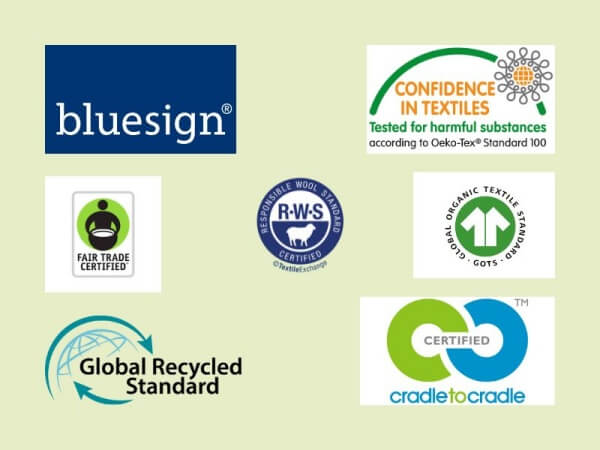
Wenn wir mehrere Zertifizierungen beibehalten, um sicherzustellen, dass unsere Activewear internationale Standards für Sicherheit, Qualität und ethische Fertigung entspricht. Folgendes sollten Sie über relevante Zertifizierungen wissen:
Produktsicherheitszertifizierungen
Oeko-tex Standard 100
- Was es zertifiziert: Textilien auf schädliche Substanzen getestet
- Bedeutung: Kritisch für Produkte mit längerem Hautkontakt
- Testen des Geltungsbereichs: Tests auf regulierte und nicht regulierte Substanzen
- Gültigkeit: Erfordert jährliche Erneuerung und regelmäßige Tests
UV -Schutzzertifizierung (für Aktivkleidung im Freien)
- Was es zertifiziert: Die Fähigkeit des Stoffes, schädliche UV -Strahlen zu blockieren
- Bedeutung: Relevant für die Leistung im Freien, die Leistungsverschleiß im Freien
- Testmethode: UPF -Bewertung (Ultraviolet -Schutzfaktor)
- Häufiger Standard: AS/NZS 4399 oder AATCC 183
Qualitätsmanagementzertifizierungen
ISO 9001
- Was es zertifiziert: Qualitätsmanagementsysteme
- Bedeutung: Demonstriert einen systematischen Ansatz zur Qualitätsqualität
- Anforderungen: Dokumentierte Verfahren, interne Audits, kontinuierliche Verbesserung
- Nutzen: Reduziert das Risiko für Qualitätsinkonsistenzen
Soziale Compliance -Zertifizierungen
Business Social Compliance Initiative (BSCI)
- Was es zertifiziert: Ethische Arbeitspraktiken und Arbeitsbedingungen
- Bedeutung: Überprüft die ethische Fertigung
- Prüfungsbereiche: Faire Löhne, Arbeitszeiten, Gesundheit und Sicherheit, keine Kinderarbeit
- Verfahren: Unabhängige Audits von Drittanbietern
Weltweit verantwortliche akkreditierte Produktion (WRAP)
- Was es zertifiziert: Rechtmäßiger, humaner und ethischer Fertigung
- Bedeutung: International anerkanntes Programm für soziale Compliance
- Fokusbereiche: Arbeitspraktiken, Arbeitsplatzbedingungen, Umweltverantwortung
- Ebenen: Verschiedene Zertifizierungsstufen basierend auf der Einhaltung
Nachhaltigkeitszertifizierungen (optional)
Bluesign®
- Was es zertifiziert: Umweltfreundliche Textilproduktion
- Bedeutung: Umfassender Ansatz zur nachhaltigen Fertigung
- Fokus: Chemische Sicherheit, Ressourceneffizienz, Verbrauchersicherheit
- Nutzen: Appelle an umweltbewusste Marken
Globaler recycelter Standard (GRS)
- Was es zertifiziert: Recycelte Inhalte in Produkten
- Bedeutung: Relevant für Activewear mit recyceltem Polyester
- Anforderungen: Minimaler Recyclinginhalt, Kette der Sorgerechtsprüfung
- Nutzen: Unterstützt Nachhaltigkeitsansprüche
Zertifizierungsüberprüfung
Bei der Bewertung von Herstellerzertifizierungen:
- Aktuelle Zertifikate anfordern (nicht abgelaufen)
- Überprüfen Sie die Zertifizierung über die Website der Ausstellungsgremium
- Überprüfen Sie den Umfang der Zertifizierung (spezifisch für relevante Produkte)
- Fragen Sie nach Verfahren zur Zertifizierungswartung
Besuchen Sie unsere Analyse von marktem Markt und Verbraucherpräferenzen in Bezug auf zertifizierte Produkte Die Aktivkleidung verstehen & Yoga Wear Market: Trends, Demografie & Möglichkeiten für B2B -Käufer.
Wie gewährleisten Sie eine konsistente Qualität im Maßstab?
Die Aufrechterhaltung der Qualitätskonsistenz bei der Skalierungsproduktion ist eine häufige Herausforderung. Viele Hersteller haben Schwierigkeiten, das gleiche Qualitätsniveau zu liefern, wenn sie von kleinen Bestellungen zu großen Produktionsläufen wechseln.
Für die Gewährleistung einer konsistenten Qualität im Maßstab erfordert standardisierte Prozesse (dokumentierte Verfahren für alle Produktionsschritte), umfassende Schulungen (Sicherstellung, dass alle Arbeitnehmer die Qualitätsstandards verstehen), statistische Qualitätskontrolle (Verwendung von Daten zur Identifizierung und Behebung von Variationen) und kontinuierliche Verbesserungssysteme (regelmäßig Überprüfung und Verbesserung von Prozessen auf der Grundlage der Erkenntnisse).
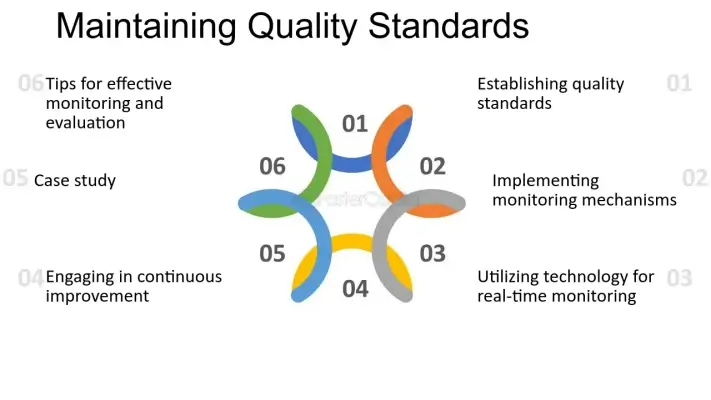
Wir haben unsere Activewear -Produktion erfolgreich auf einen Jahresumsatz von über 30 Millionen US -Dollar skaliert und gleichzeitig eine konsequente Qualität aufrechterhalten. Hier sind unsere Schlüsselstrategien für die Qualitätskonsistenz in der Skala:
Standardisierung und Dokumentation
Die Grundlage einer konsistenten Qualität sind standardisierte Prozesse:
- Detaillierte Arbeitsanweisungen: Schritt-für-Schritt-Verfahren für jede Operation
- Visuelle Standards: Körperliche Beispiele für akzeptable und inakzeptable Qualität
- Messspezifikationen: Präzise Toleranzen für alle Dimensionen
- Baustandards: Spezifische Anforderungen für Nähte, Stiche und Techniken
Trainings- und Fähigkeitsentwicklung
Die Fähigkeiten der Arbeitnehmer wirken sich erheblich auf die Qualitätskonsistenz aus:
- Umfassende Erstschulung: Gründliches Onboarding für neue Arbeiter
- Qualifikationsbescheinigung: Überprüfung der Kompetenz vor unabhängiger Arbeit
- Fortlaufende Fähigkeitenentwicklung: Regelmäßige Trainingsaktualisierungen und Verbesserungen
- Cross-Training: Vielseitigkeit entwickeln, um die Flexibilität aufrechtzuerhalten
Statistische Prozesskontrolle
Das datengesteuerte Qualitätsmanagement ermöglicht die Konsistenz in Skala:
- In-Prozess-Messungen: Regelmäßige Überprüfung der wichtigsten Abmessungen
- Defektverfolgung: Überwachungstypen und Häufigkeiten von Qualitätsproblemen
- Ursachenanalyse: Identifizierung der zugrunde liegenden Ursachen für wiederkehrende Probleme
- Implementierung der Korrekturmaßnahmen: Systematischer Ansatz zur Lösung von Problemen
Technologie und Automatisierung
Der strategische Einsatz von Technologie verbessert die Konsistenz:
- Automatisiertes Schneiden: Gewährleistung eines präzisen Musterschnitts
- Computergesteuerte Nähte: Aufrechterhaltung einer konsistenten Nahqualität
- Digitale Qualitätsprüfung: Verwenden von Technologie zum Erkennen von Mängel
- RFID -Verfolgung: Überwachung von Produkten während der gesamten Produktion
Informationen zum Navigieren von Lieferketten- und Logistiküberlegungen finden Sie in unserem Leitfaden zu Von der Fabrik zum Lager: MOQS verstehen, Vorlaufzeiten & Logistik in Activewear & Yoga tragen Beschaffung.
Abschluss
Die Implementierung einer robusten Qualitätskontrolle und der Einhaltung von Fertigungsstandards ist für eine erfolgreiche Beschaffung von Aktivkleidung von wesentlicher Bedeutung. Durch das Verständnis der einzigartigen Testanforderungen, der Einrichtung umfassender QC -Prozesse und der Zusammenarbeit mit ordnungsgemäß zertifizierten Herstellern können Unternehmen sicherstellen, dass ihre Produkte eine konsistente Leistung bieten und das Vertrauen der Verbraucher aufbauen.
Unser Engagement für die Qualitätskontrolle hat es uns ermöglicht, die Produktion von Aktivkleidung zu skalieren und gleichzeitig herausragende Leistungen zu erhalten und unseren Partnern dazu zu helfen, erfolgreiche Marken in dieser Wettbewerbskategorie aufzubauen.
Eine umfassende Übersicht über die gesamte Kategorie Activewear, einschließlich Markttrends und Geschäftsmöglichkeiten, besuchen Sie unsere Ultimativer B2B -Leitfaden zur Beschaffung & Verkaufen activewear & Yoga -Verschleiß.
Häufig gestellte Fragen (FAQ)
Was ist das häufigste Qualitätsproblem bei der Aktivitätsherstellung?
Die häufigsten Qualitätsprobleme sind Pilling (Oberflächenfuzzing, das das Aussehen beeinflusst), Nahtversagen während der Dehnung (insbesondere in Bereichen mit hohem Stress) und Probleme mit der Deckkraft in Leggings (durch den Durchgang durchweg). Alle können durch ordnungsgemäße Materialauswahl und Konstruktionstechniken verhindert werden.
Wie oft sollte Activewear während der Produktion getestet werden?
Qualitätsüberprüfungen sollten in mehreren Phasen stattfinden: Genehmigung vor der Produktion, Erstzahlenprüfung, Inline-Kontrollen in regelmäßigen Abständen (normalerweise alle 1-2 Stunden) und endgültige AQL-Inspektion vor dem Versand. Leistungstests sollten an Proben aus jedem Produktionsgrundstück durchgeführt werden.
Was ist der Unterschied zwischen Erstanbieter und Drittanbietern?
Erstanbieter-Tests werden vom Hersteller durchgeführt, während Tests von Drittanbietern von unabhängigen Labors durchgeführt werden. Tests von Drittanbietern bieten eine größere Objektivität und sind häufig für die Zertifizierung oder die Konformitätsprüfung erforderlich.
Wie kann ich die Qualitätsansprüche eines Herstellers überprüfen?
Anfragen von Testberichten, besuchen Sie Einrichtungen, um Testverfahren zu beobachten, Kundenreferenzen zu fordern und Stichproben für unabhängige Tests zu bestellen. Beginnen Sie mit einem kleinen Produktionslauf, um die Qualität vor größeren Verpflichtungen zu überprüfen.
Was ist die minimale akzeptable Wiederherstellungsrate für Activewear -Stoffe?
Quality Activewear sollte sich mindestens 85% erholen, nachdem sie auf 150% der ursprünglichen Abmessungen gedehnt wurden. Premium-Produkte erzielen häufig eine Erholung von 90 bis 95%, um sicherzustellen, dass sie die Form durch mehrere Verschleiß und Waschungen aufrechterhalten.
Wie stelle ich Qualitätsstandards für meine Activewear -Linie fest?
Definieren Sie klare Spezifikationen für Leistungsattribute (Stretch, Wiederherstellung, Feuchtigkeitsmanagement), Aussehensstandards (akzeptable Variationen in der Farbe, Konstruktion) und Haltbarkeitsanforderungen (Waschzyklen, Abriebfestigkeit). Dokumentieren Sie diese in einem umfassenden Tech -Pack und legen Sie Testprotokolle fest, um die Einhaltung zu überprüfen.
Holen Sie sich ein kostenloses Angebot für Ihre Activewear -Projekte
